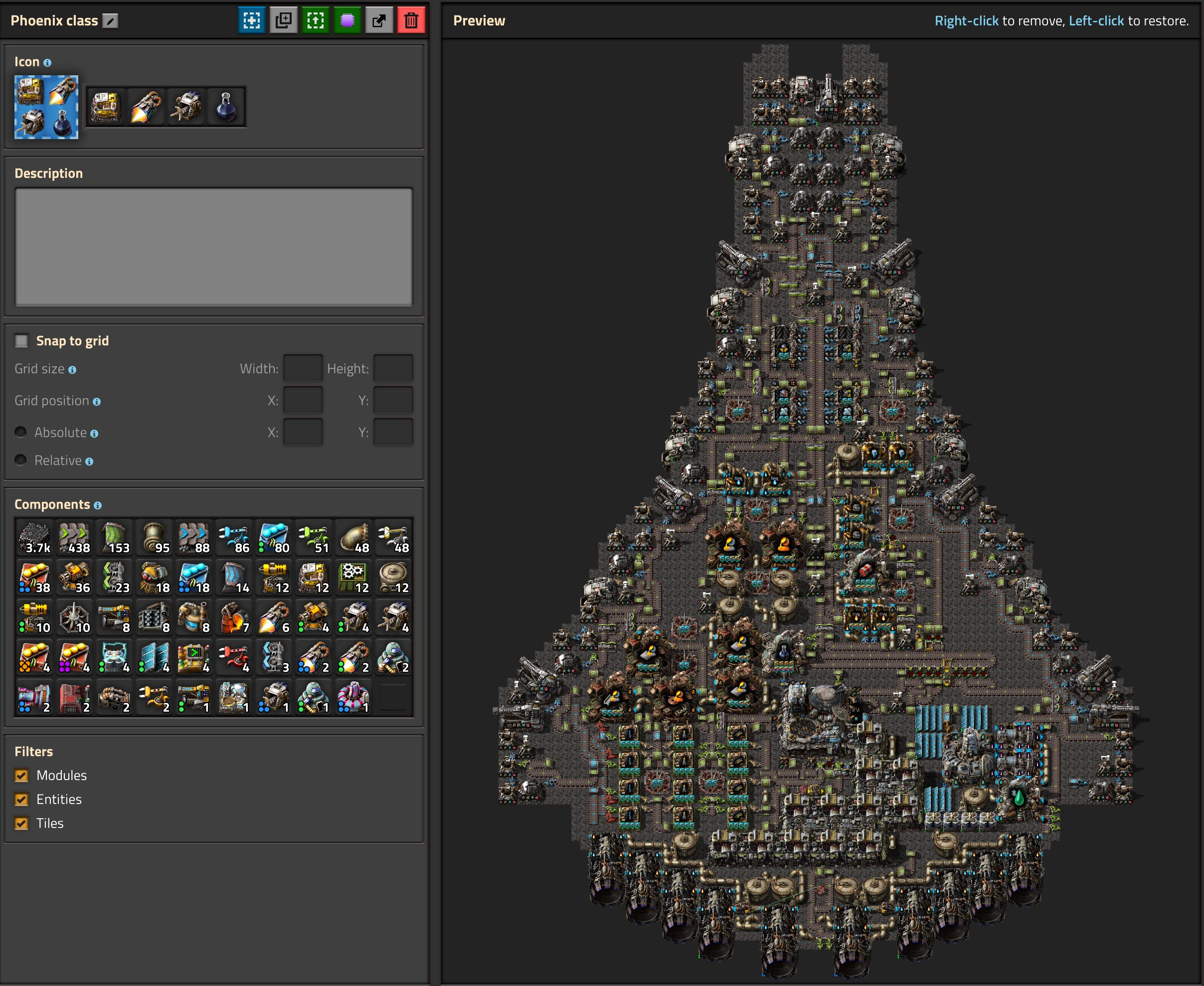∫ Factorio space age: calculator
Kernel:
- Factorio 2.x tips and tricks
- An analysis of top-down recycling factory model and a solution.
- A web-assembly-based linear programming calculator for Factorio 2.x.
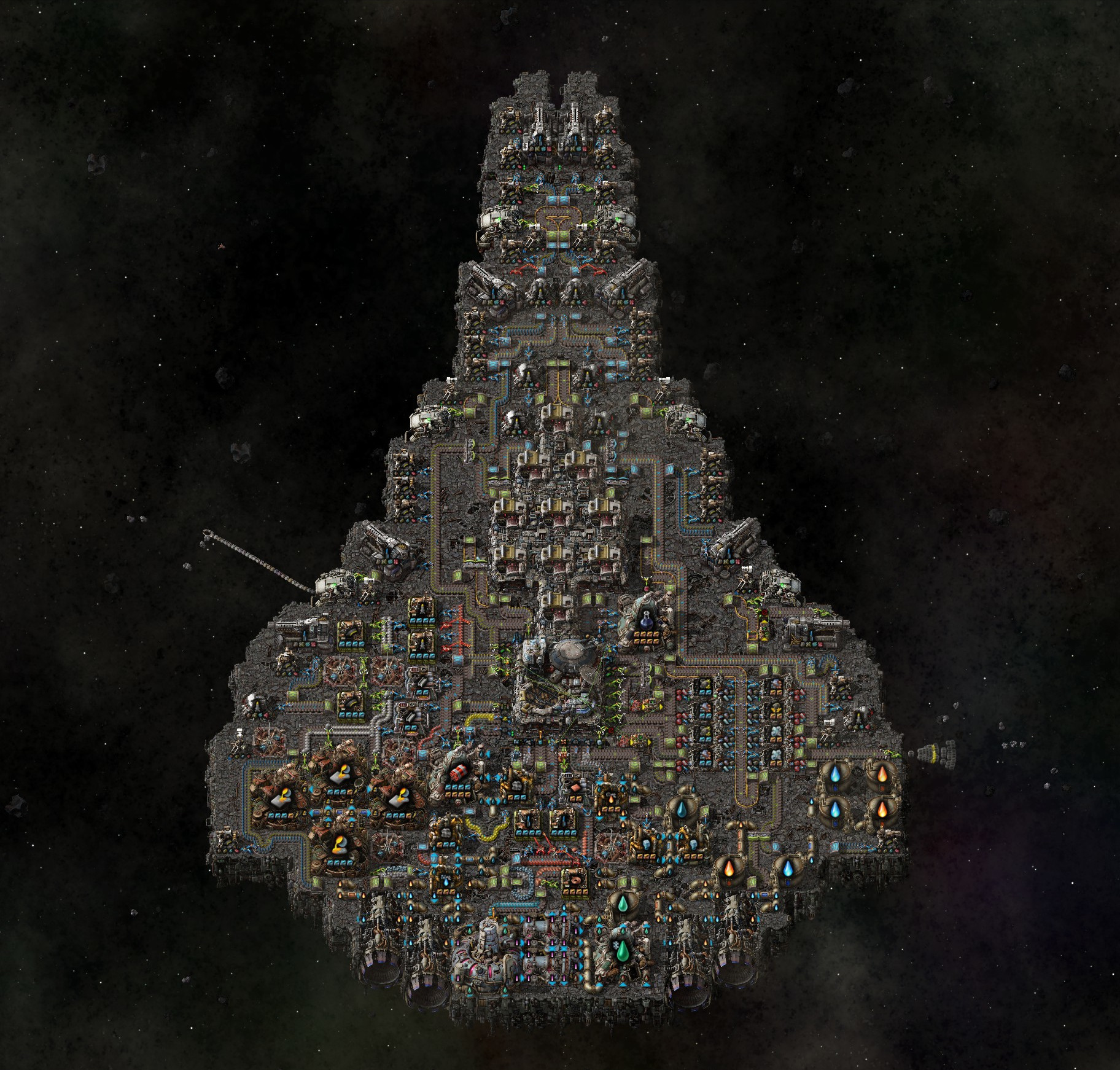
Over a thousand of hours I spent in Factoriohttps://store.steampowered.com/app/427520/Factorio should tell you how much I love this game. The game is the literally the miniaturized of the real world technological progress disguised in an automation sandbox. If Dyson sphere program is the Beatles, Factorio is definitely Mozart in comparison.
Here I would like to offer some insights from a person who already completed the game. Especially on the matter that would cause a headache to many players: how to keep the factory running without cogging up the production line in space age (2.x).
∂ Liquid must flow
Let's start with the three core liquids: heavy oil, light oil, and petroleum gas. When you climb up the technology tree, you will eventually reach the process that produces these liquids from crude oil and water at once, which is way more efficient that anything you have seen in the early game. The problem is in most of the case the rate of consumption of these liquids do not match the rate of production, and when one of the liquid tanks is full, the production line stops.
There is no way to dump the excess liquid before space age, but in space age, you can store the excess liquid in the barrels and recycle them; albeit with the cost of steel plates. There's a better way to handle this problem which also works in the version 1.x.
If your factory always consume more of the petroleum gas than the light oil and then the heavy oil, then you can make a simple circuit that always balance the amount of the three liquids.
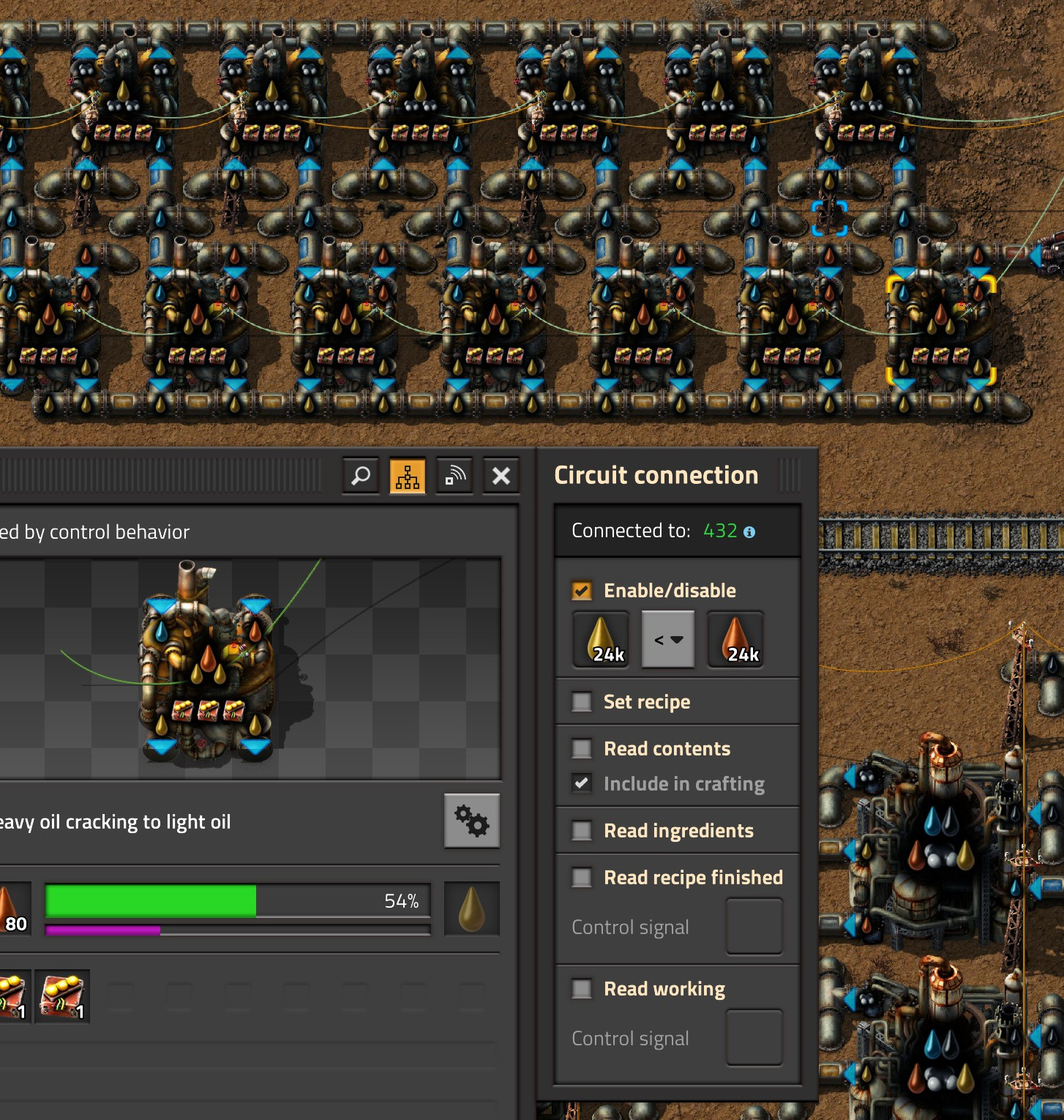
∂ Gleba lives
Though many people might say otherwise, Gleba is my favorite planets in Factorio space age. The planet is one that's hardest to tame, but most rewarding when you manage to do so. It enables the production of Biolabs, which is the coolest building in the game, and also the productivity module 3.
When dealing with Gleba, you should remind yourself that all spoilable productions have at least two outputs: the products and spoilages. The cogging of the production line usually comes from leaving things to spoil without a way to flush them out. It's useful to think of the factory on Gleba as a multi-celular organism. Every cell needs to be connected to the blood vessel to receive the nutrients and oxygen, and more importantly, to get rid of the waste. The solution is therefore straightforward and does not require any mathematics to analyze.
- Assign whitelist to inserters. Separate one that takeout spoilages and one that takeout products.
- Always leave room in the belt for products and spoilages to flow out.
- One useful model is a belt loops that maintain the flow and flush excess products and spoilages to burners.
To guarantee a space within the belt, adding a spliter that halves items on the belt is a good idea. Here is sample captured from my factory on Gleba.
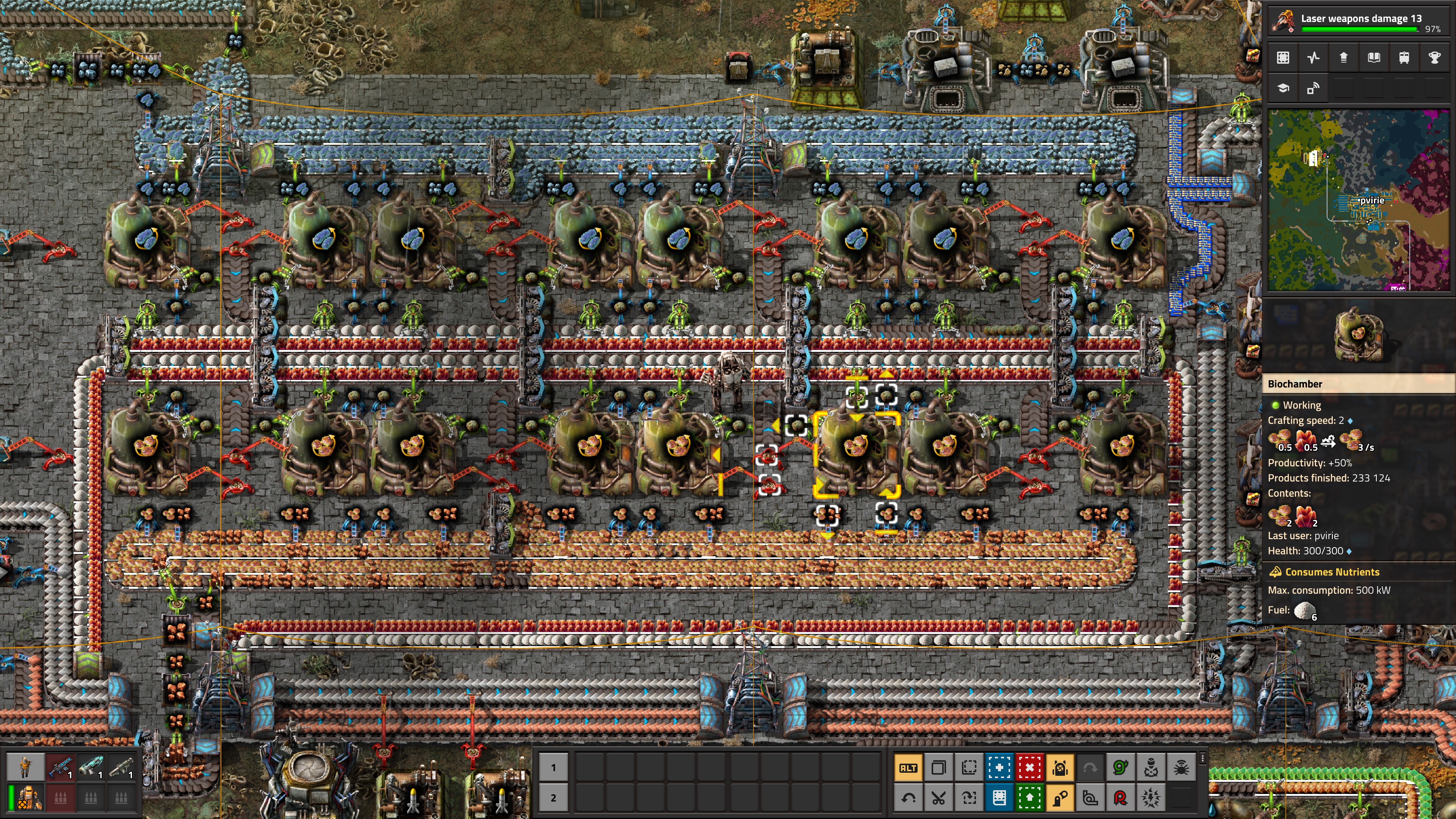
∂ And Fulgora...
In terms of quality of life, there's nothing complicated about Fulgora. Just setup power capturing facility and start your scrap recycling process then you're good to go. But from time to time, you will notice that things on Fulgora stop sending its tribute to the space platform. Then the hideous mechanics of the recyclers will start to show its true face.
If any of its 12 products is coggged up, the whole factory stops.
We only have to concern about three liquids when we're on Nauvis. But on Fulgora, we have to concern about all the twelve products and also any downline products that are recycled from them. Here is my rule of thumb that works for me.
When ever you plan to produce something at a specific rate on Fulgora, always plan to destroy them at the same rate.
So here is how you can do it. First, calculate the capacity of your factory to manufacture products at your desired rates. Then, calculate the capacity of your recyclers to destroy everything at the rate they are produced. Then tap anything you want along the way to produce the desired products.
Simply planning to destroy everything to oblivion is not enough. You have to make sure that intermediate products are prioritized to be used first, and only the excess should be sent toward the downstream recyclers. There's a useful buffer circuit pattern that enforces this rule.
Imagine a buffer chest that has four input and output flows: input from top product recycler (I1), output to factory (O1), input from lower product factory (I2), and output to eliminate excess products (O2). We leave I1 flow freely but only allow I2 to flow in when the buffer is almost empty because we prioritize the use of recycled products first. O1 is not restricted, the factory can use any products from the buffer. But O2 is only allowed to flow when the buffer is almost full to prevent the factory from clogging up.
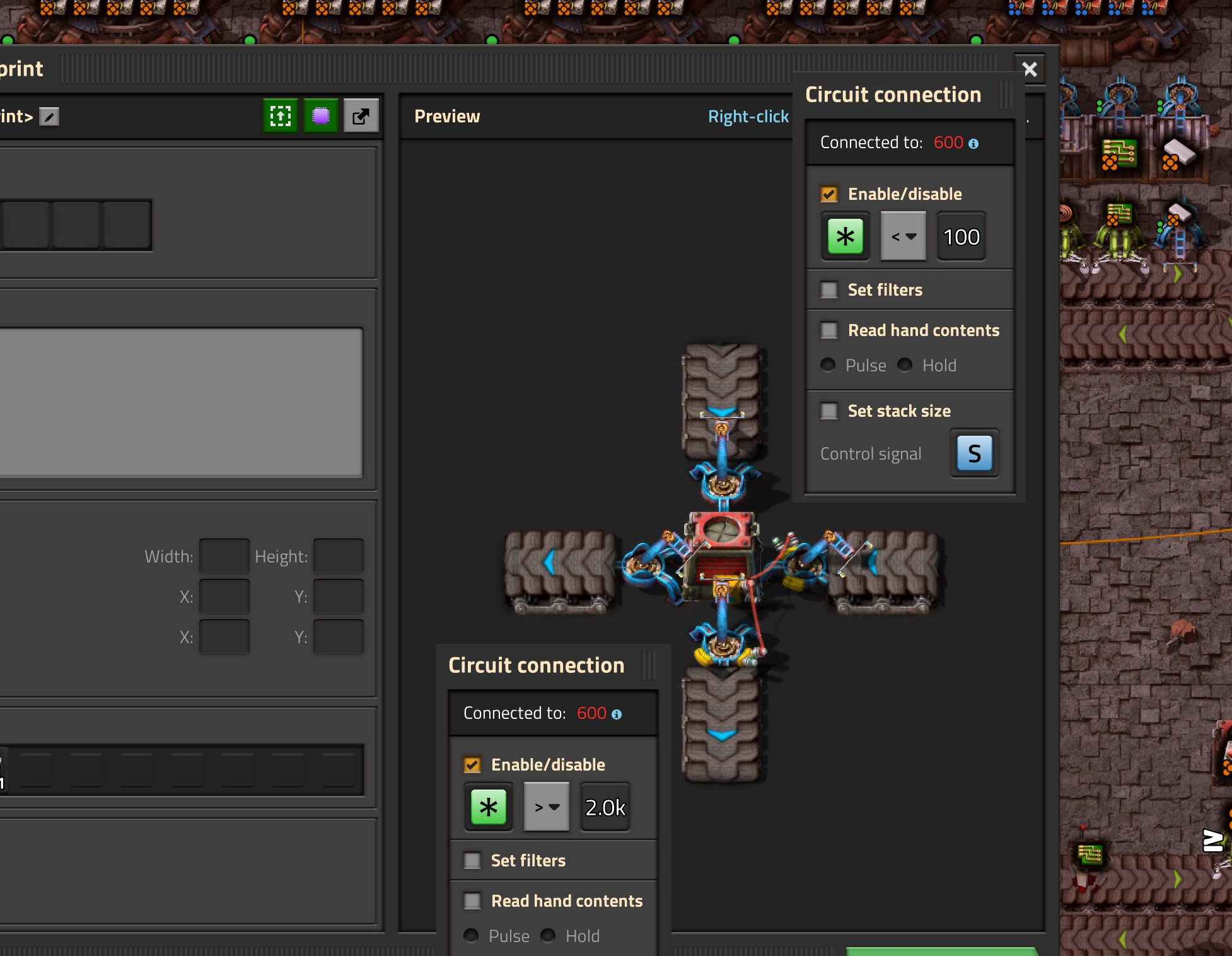
∂ The calculator
Here I present yet another calculator for Factorio supporting the space age (Updated 2024/12/13). The calculator is designed to find the optimal production plan for given products and their production rates, while keeping the factory flows. This includes the suggestion for Fulgora I mentioned. You may explore and enjoy the calculator below.
∂ Results:
| Machine | Amount (Ceil) | Type | Product | Rate (pcs/s) |
| Resource | Production (pcs/s) | Consumption (pcs/s) | Net (pcs/s) |
Here is my final ship. "The Phoenix" is the largest of my fleet.
